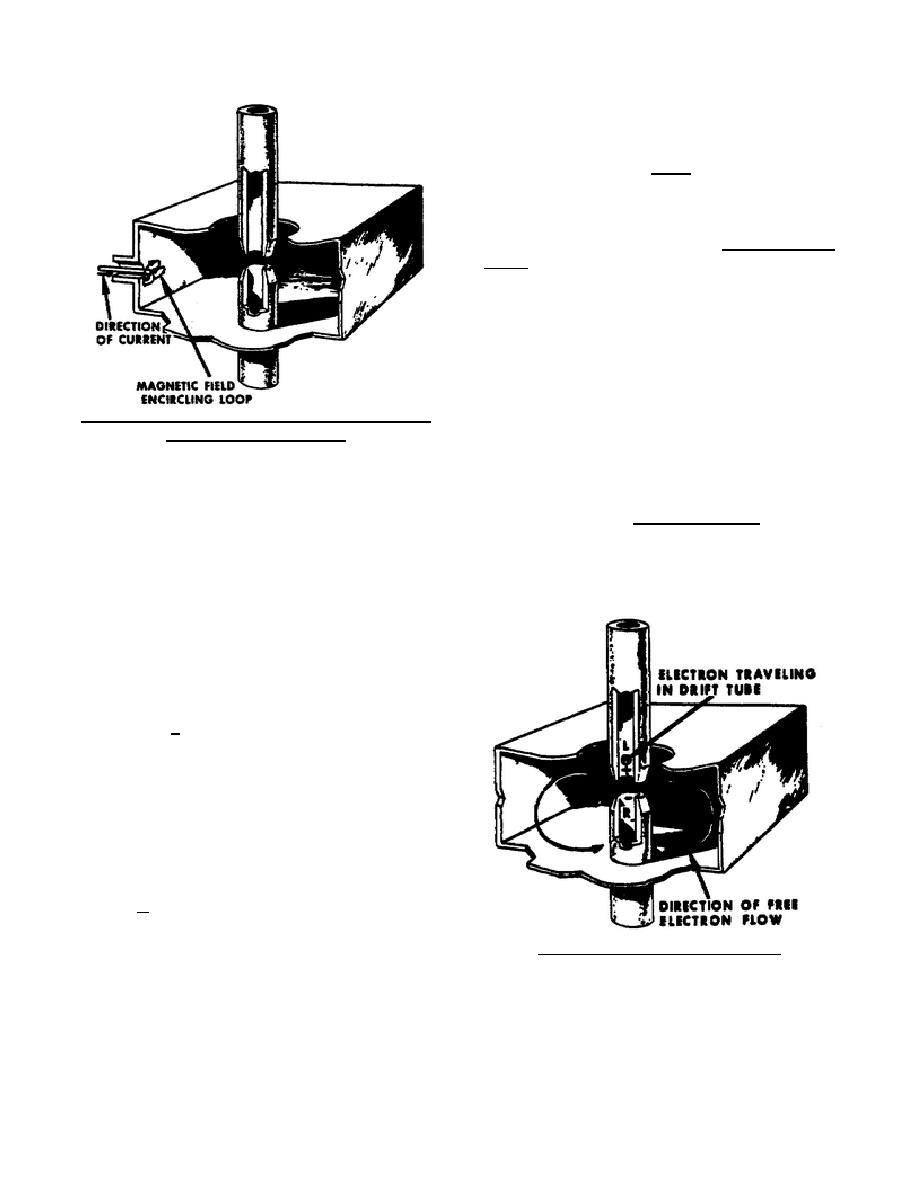
coupling into the cavity. The energy that the
electron beam gives up to the cavity starts and
sustains oscillations within the cavity. For example,
consider the action of a single electron as it travels
past the region of the drift tube gap. First let's
consider a property of the traveling electron and also
the drift tube through which it travels. The electron
traveling trough the drift tube is a moving negative
charge. The drift tube, because it is a good
conductor, contains free electrons that can become
moving negative charges, if they are attracted by a
positive charge or repelled by a negative charge.
Figures 42 through 44 show a series of actions as the
traveling electron approaches and passes beyond the
drift tube gap, as explained below. The drift tube
tips are labeled with letters (L and R) to simplify the
explanation.
Figure 41. Coupling loop has circling magnetic field
because of its current flow.
(1) Figure 42 shows the electron at L
approaching the edge of the gap. As it approaches
(1) The microwave (RF) power source
the gap, it repels the free electrons from tip L,
causes alternating current flow through the loop.
through the cavity wall surface, and to tip R.
Example paths of the free electrons flow are shown
(2) Current flow in the loop causes a
by the arrows along the cavity walls. Electrons
strong magnetic field that encircles the loop as
flowing in this direction cause tip R to become
shown in figure 41. This magnetic field expands
negative with respect to tip L.
and contracts.
(3) Because the motion of the magnetic
field is against the inner wall of the cavity where the
loop is connected, an alternating (RF) current flow is
induced on the surface of that wall.
(4) The RF current flow, in turn, causes
alternating electric and magnetic fields within the
cavity (para 8b).
(5) The amount of RF power applied to
the cavity determines the intensity of the resultant
electric and magnetic fields.
The RF input
frequency must also be at or near the resonant
frequency of the cavity.
1-42. CAVITY EXCITATION
WITH
DC
(BEAM) ENERGY
a. Excitation of the cavity with dc energy
is provided by the high velocity dc electron beam
focused through the drift tube. Electrons in the
Figure 42. Electron approaches gap.
beam cannot escape through the drift tube gaps
because of the ceramic windows that seal the gaps.
However, the drift tube gap permits dc energy
344 L1
41



 Previous Page
Previous Page
